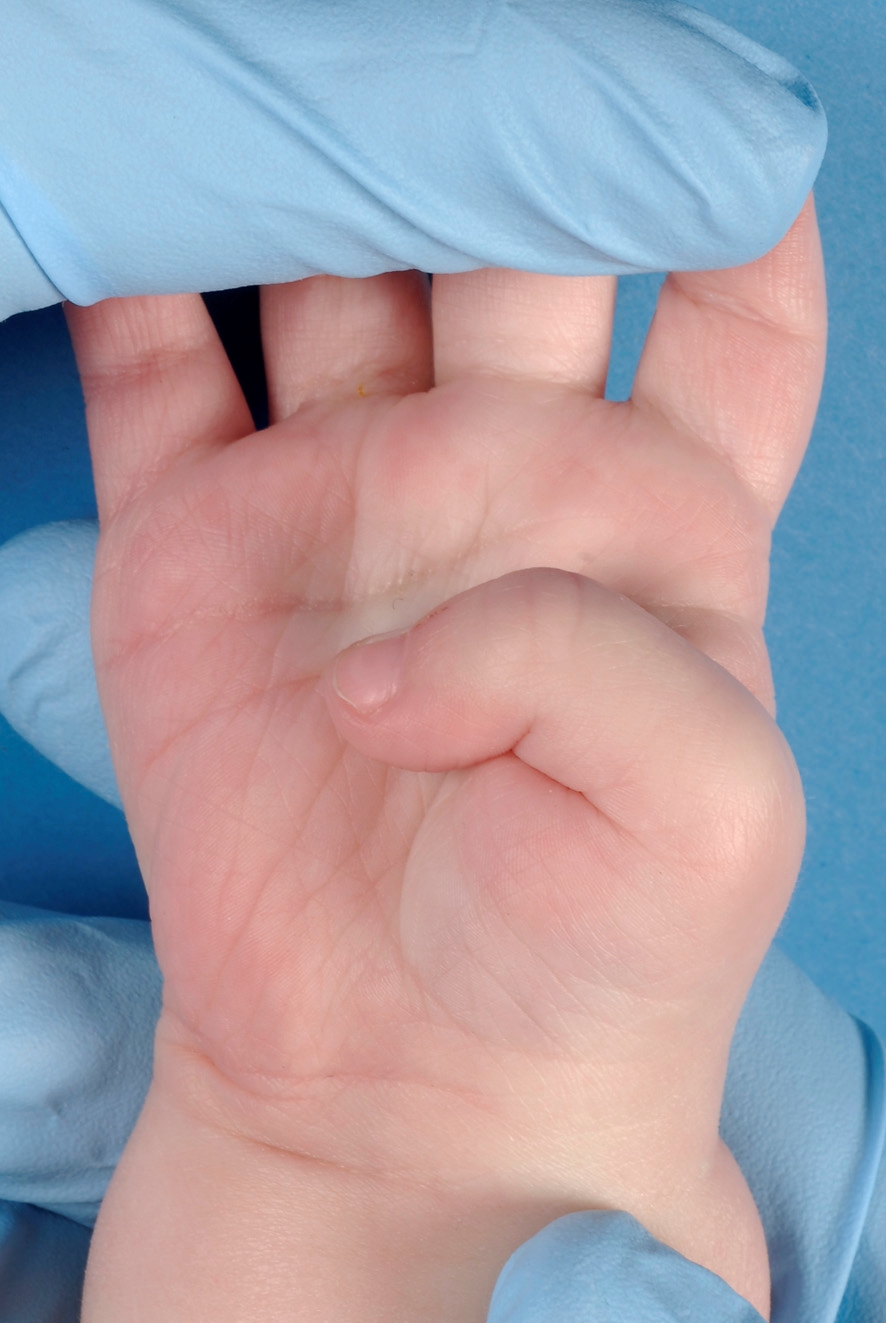Thumbs, Congenital Clasped

In this disorder the thumb is adducted and flexed across the palm due to a defect in the extensors of the thumb. Weckesser et al. (1968) described an American black family in which 7 males in 4 sibships were affected. The pattern was entirely consistent with X-linked recessive inheritance. Findings in children and grandchildren of affected males were not described. White and Jensen (1952) observed the anomaly in mother and 2 children, and Namba et al. (1965) described it in brother and sister. A preponderance of affected males (27 out of 42) is consistent with X-linkage, especially when the likely heterogeneity of congenital clasped thumb is taken into account. Weckesser et al. (1968) classified their cases into 4 groups. Clasped thumb occurs in some families with X-linked hydrocephalus due to stenosis of the aqueduct of Sylvius (307000). Anderson and Breed (1981) suggested that the Moro reflex may be a useful way to detect congenital clasped thumb early. The thumb normally extends during the Moro reflex. Also see 201550. Tsuyuguchi et al. (1985) reviewed 43 cases and presented a revision of the classification by Weckesser et al. (1968). They provided no genetic information.